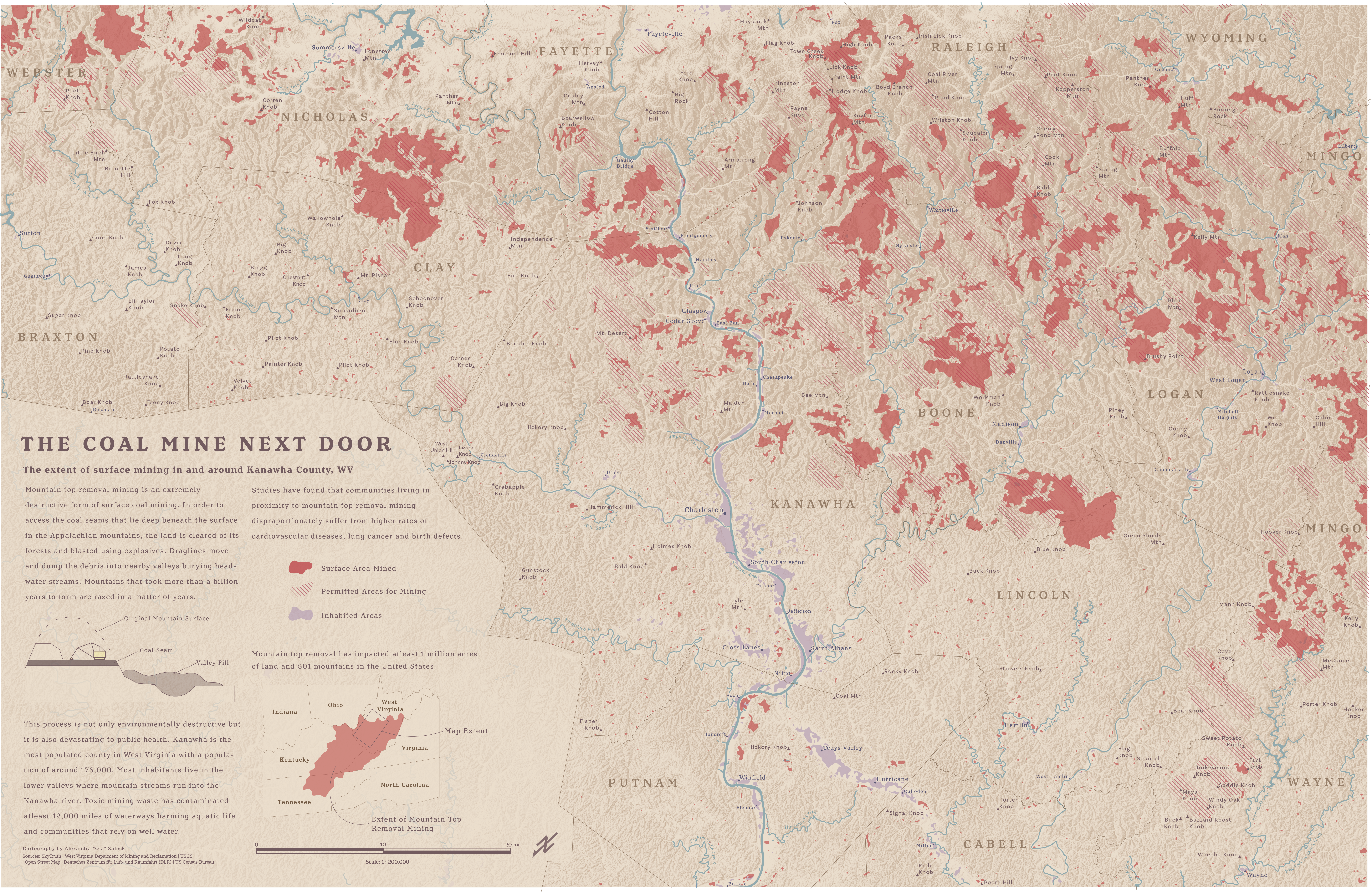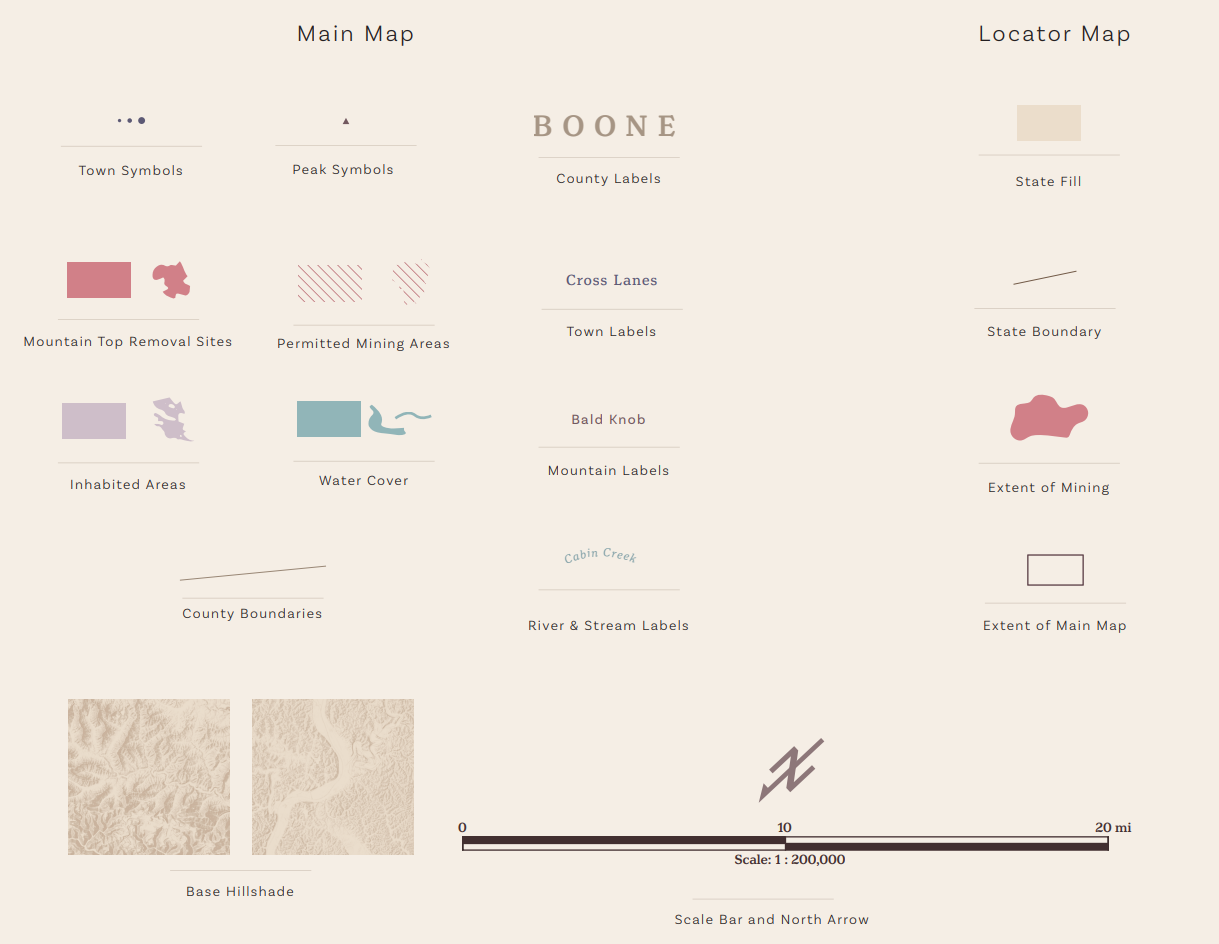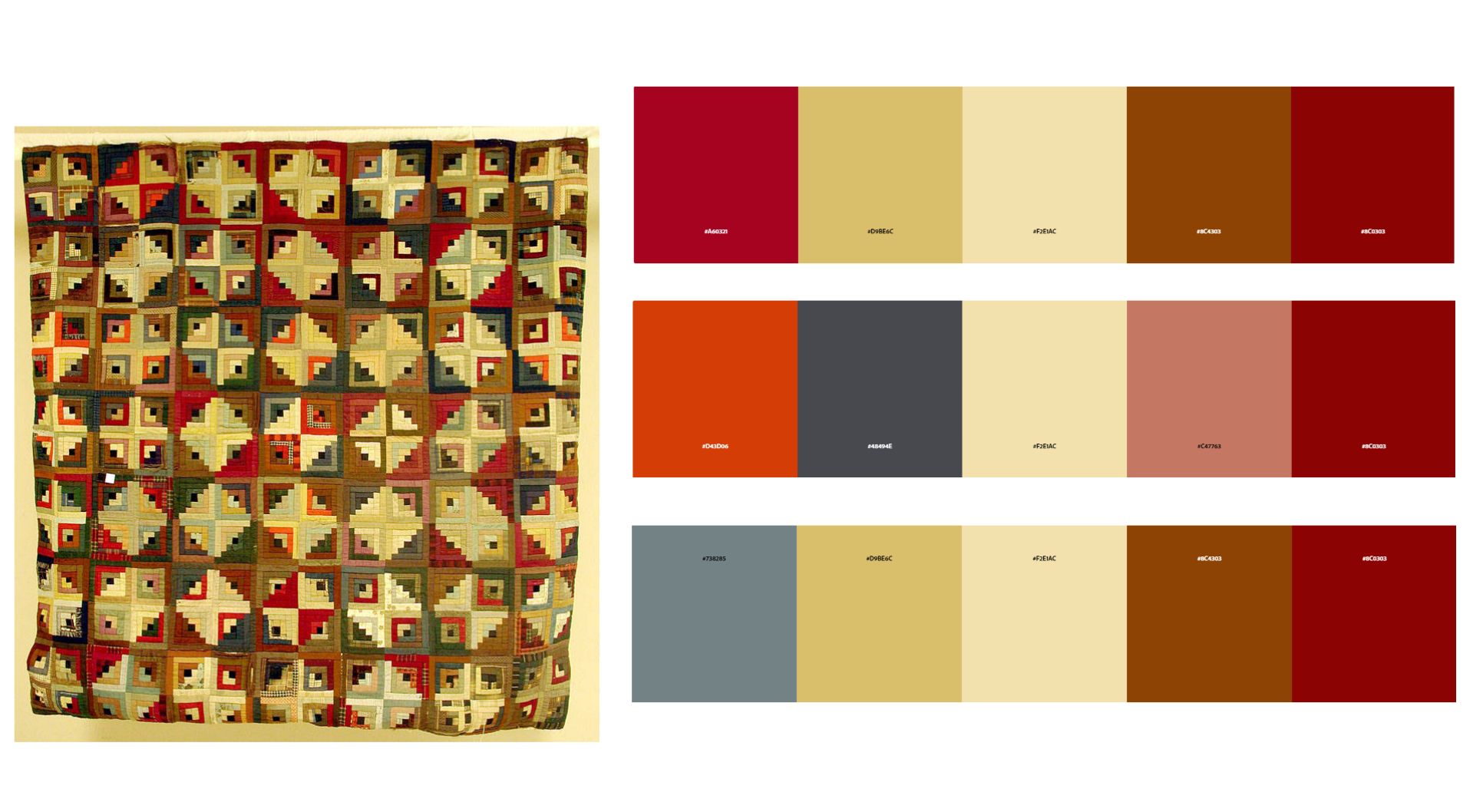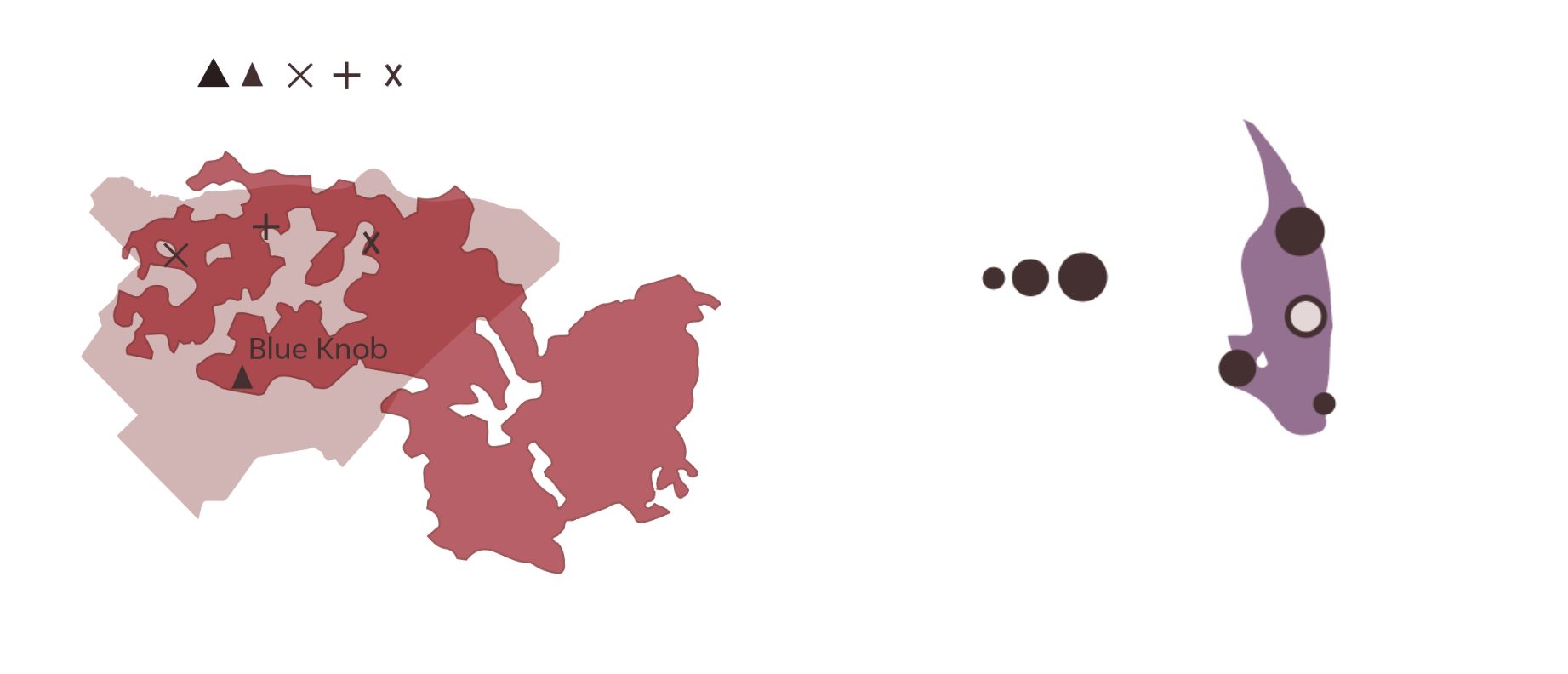The Coal Mine Next Door
The map titled “Coal Mine Next Door” was created during a cartographic design seminar in my final year as an undergraduate student. This map is about the extent and “closeness” of surface mining as much as it’s prevelance. With Kanawha County, WV as my subject I attempt to mountain top removal into perspective. This is a map about a story with multiple characters: mountain top removal, populated valleylands, and the flowing water bodies that link them.
On this page, I will walk you through my process with all the decisions and blunders that I had to make to get this finihsed product.


When I started this project I had a grand vision for what I wanted to map. I was particularly interested in flooding in West Virginia and how it has been exarcebated by strip mining in that region. Unfortunately, despite my tedious efforts, I was unsuccesful in finding readily accessible data and had to pivot since the clock of the academic semester was ticking. The idea of mapping flooding had to take a backseat but I was still captivated by the idea of water, flow and the way it pervades the landscape. My focus landed on the Kanawha River, the largest inland waterway in WV, and its connection to local strip mining practices for coal extraction. Although this map is functionally about strip mining, the river plays a central role in that narrative, and I needed to make it a central figure on the map. To do this I abondoned the typical north-south orientation to have the river flow down the center of my map.
[insert image here of flipping]
This decision to flip the orientation, although an interesting one, caused me a lot of problems when it came time to work on terrain representation.
The color scheme for this map is meant to hearken to the past. When looking for inspiration I kept coming back to the look and textures of old US coal mining maps. I tried to emulate this with the aged parchment-like base color. This was also the part in the process where I was extensively researching the history of strip mining and the cultures and traditions of the region. For my color scheme I also heavily took inspiration from Appalachian quilting traditions, the patterns of which embody local histories and cultural heritage.

